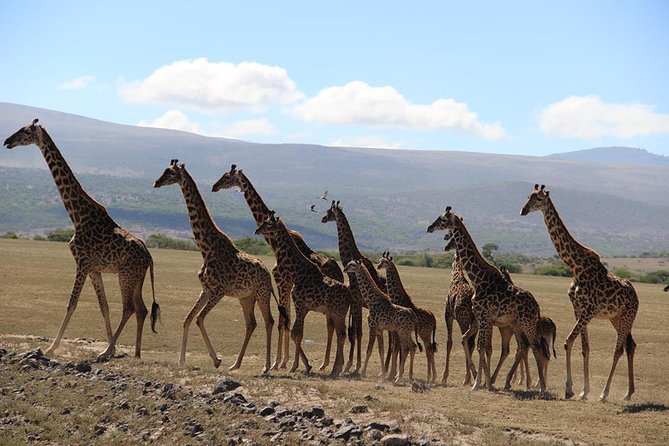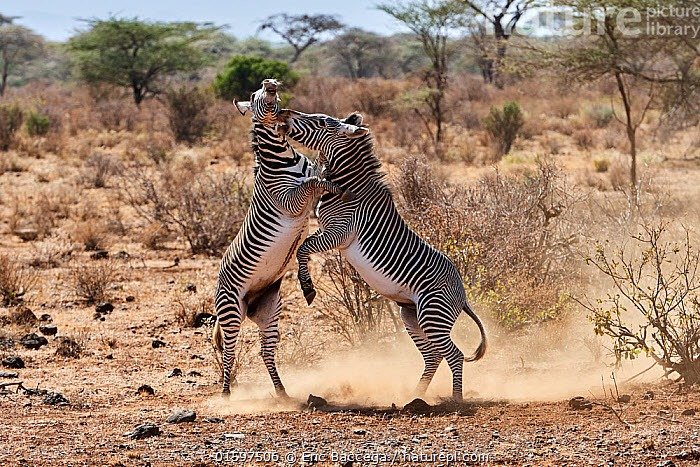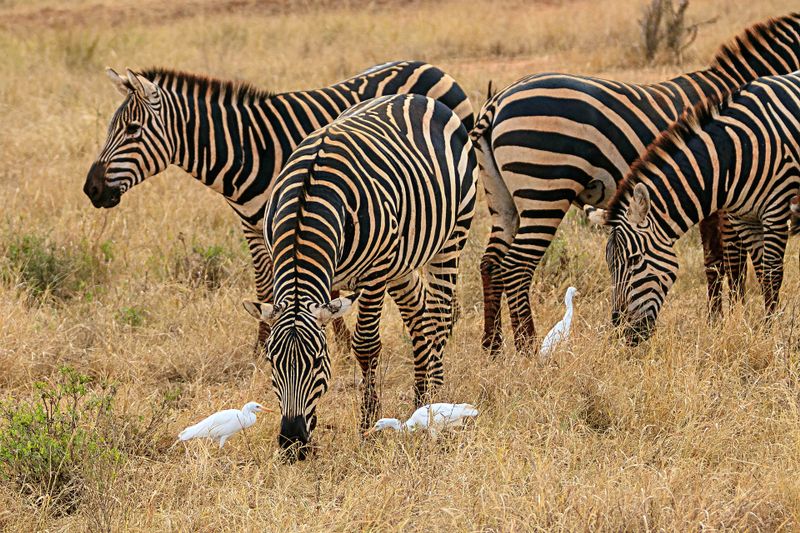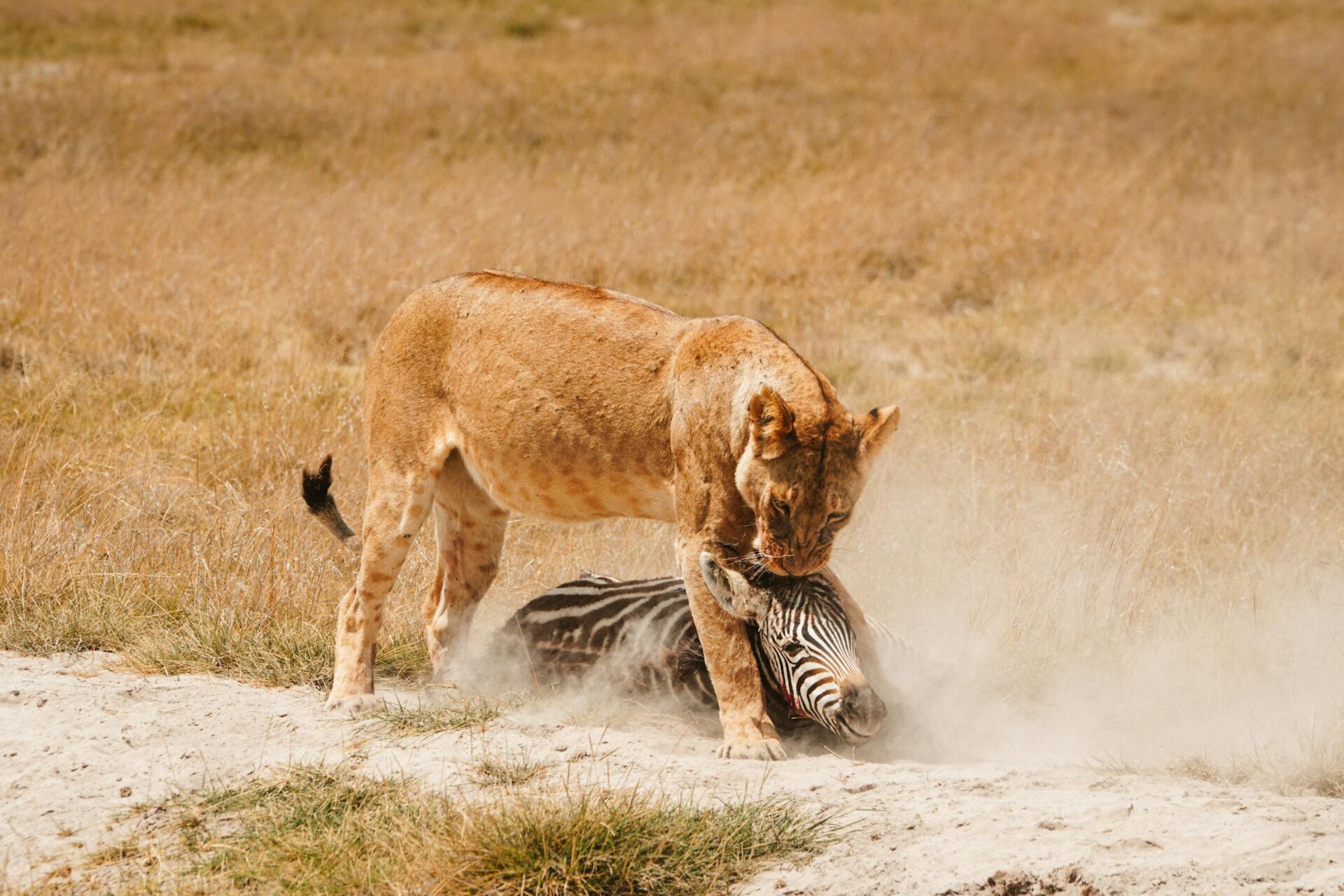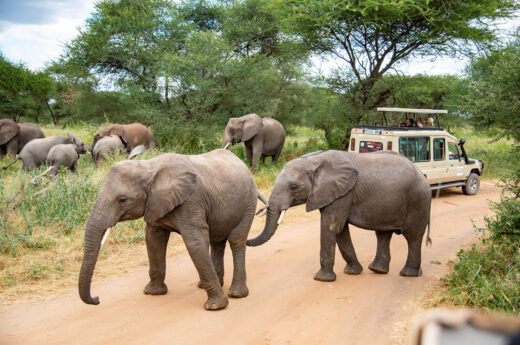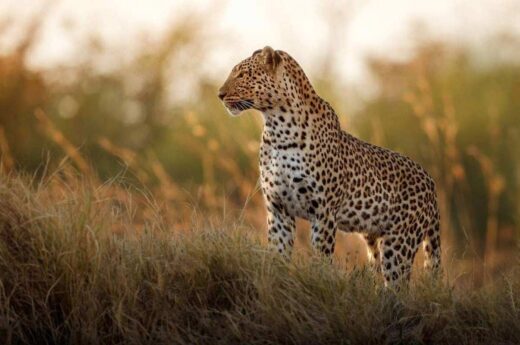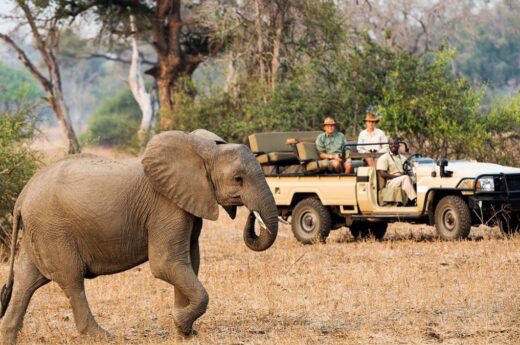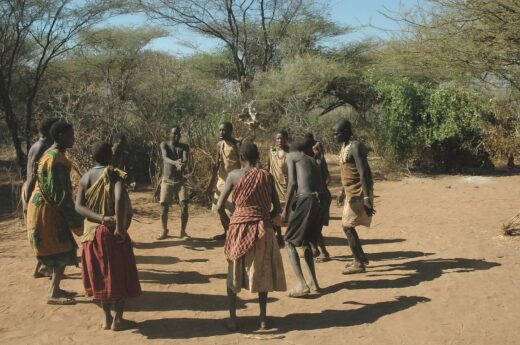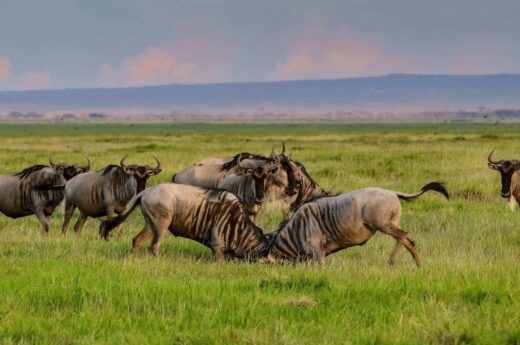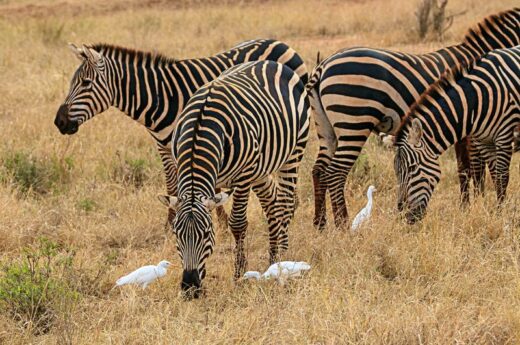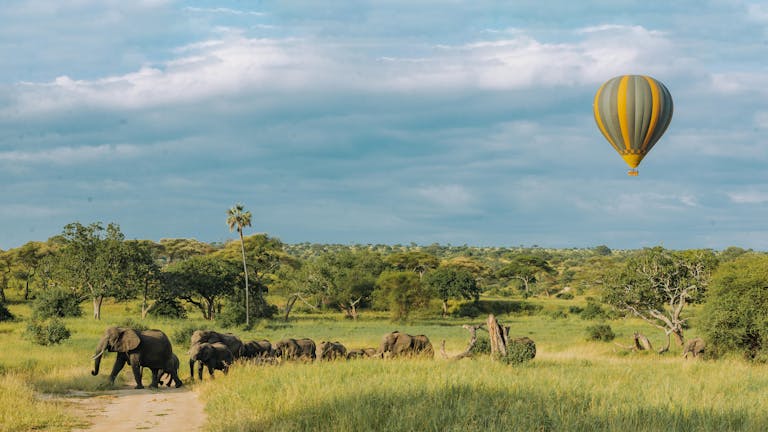
Tarangire National Park
Tarangire stands out among its peers thanks to an abundance of two of nature’s giants: African elephants and the peculiar baobab tree.
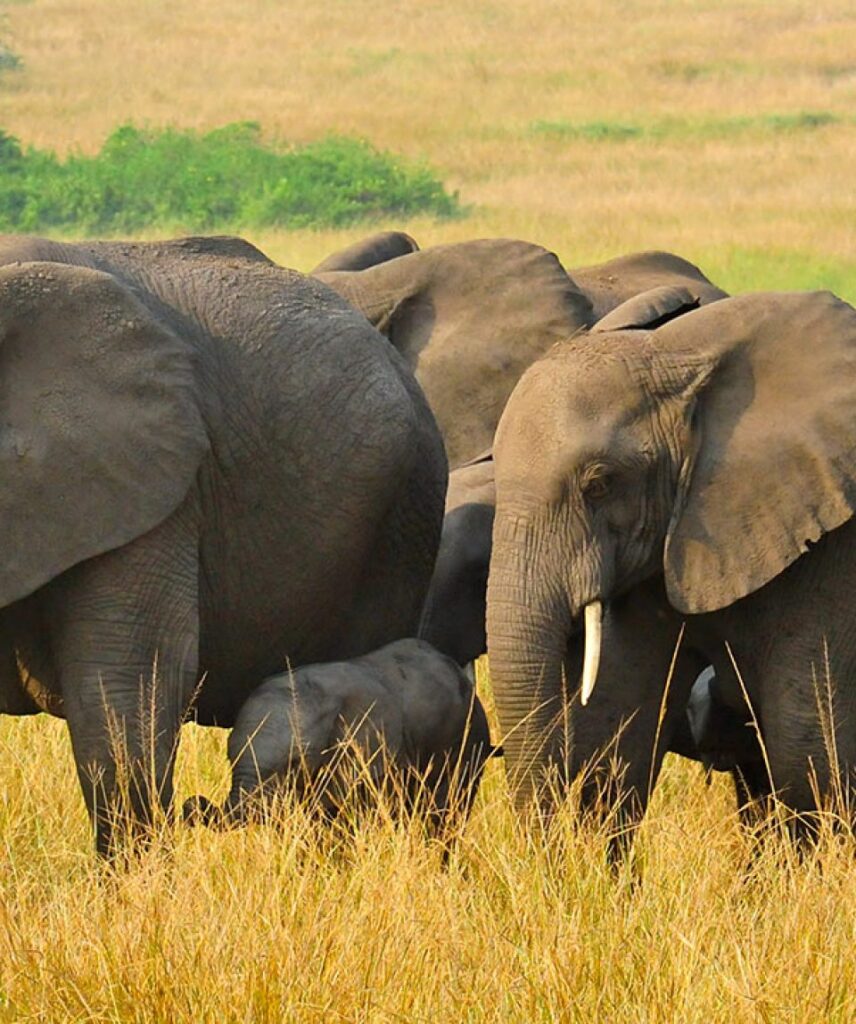
About Tarangire
Tanzania’s sixth-largest park, Tarangire, established in 1970 and spanning 2,850 km², is named after its ‘warthog river.’ Located off the main safari route, it provides a distinct experience, featuring unique wildlife like the fringe-eared oryx.
Tarangire offers a tranquil safari due to its lower tourist numbers, famed for its abundant elephant herds and iconic baobab trees. Wildlife concentrates near the river during the dry season, drawn by its consistent water supply.
Dry season brings together large animal groups, while rains scatter wildlife and hinder travel. Yet, Tarangire’s serene ambiance and diverse wildlife make it a cherished, less-crowded safari destination.
Highlights
Explore Tarangire’s wild beauty with exciting game drives, riverside birdwatching, and enriching cultural encounters with local villages.
Elephants
Tarangire hosts massive elephant gatherings, reaching 3,000 in the dry season, with herds up to 300. Superb wildlife viewing is consistent throughout the year.
Baobab Trees
Tarangire features numerous unique baobab trees, and visitors can even explore the interior of the notable ‘Poacher’s Hide’ tree.
Bird-watching
For bird enthusiasts, Tarangire boasts over 500 species, with rare locals and seasonal visitors.
Predators
Lions, cheetahs, leopards, and hyenas are commonly seen, with a potential sighting of rare African wild dogs.
Unusual Species
Encounter diverse wildlife, including fringe-eared oryx, rare Coke’s hartebeests, gerenuk, dik-dik, and Grant’s gazelles.
Rock Paintings
Hundreds of prehistoric human creations are located, mainly in the Kolo district, adjacent to the park.
Different areas of the Tarangire
Weather and Climate
January & February – Following the short rains, a dry period happens, though its timing is unpredictable.
March – May – During the ‘long rains,’ daily showers are typical, though rarely continuous. Expect frequent cloudy skies, with April and May bringing colder temperatures from passing cold fronts.
June – October – Dry weather is typical, with temperatures fluctuating between 14°C and 26°C.
November – December – The ‘short rains’ are an unpredictable wet period, lasting up to four weeks, with brief daily showers. Daytime highs are around 28°C, dropping to 16°C at night.
Activities
Engage in Tarangire’s varied adventures, from exciting safaris to cultural visits, and fully appreciate its wildlife and scenic wonders.
Game Drives
Departing during the cooler, wildlife-active hours, you’ll explore in a specialized safari vehicle with a knowledgeable guide.
Hot Air Balloon Trips
Enjoy a truly memorable early morning adventure, gliding silently over the wildlife below.
Night Game Drives
With authorized operators, night drives allow for viewing the park’s nocturnal wildlife, including civets and aardvarks.
Maasai and Barabaig Cultural Experiences
Experience a captivating glimpse into age-old traditions with visits to local homesteads.
Rock Paintings
A day trip to the Kolo area offers the chance to see numerous prehistoric art pieces on the rocks.
Bird Watching
With 500+ bird species, including unique locals and seasonal migrants, is a haven for birdwatchers.

